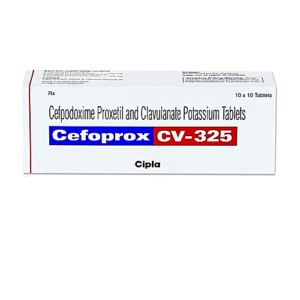Product Specifications
| . | Standard | Physical Form | Tablet |
| Grade | A | Function | Anti-Bacterial |
| Usage | Antibiotic | Ingredients | Amoxycillin & Clavulanate |
| Storage Instructions | Store at Dry And Cool Place | Dosage | As Per Direction By Physician |
Product Description
Amoxicillin and Potassium Clavulanate tablets are a combination medication used to treat bacterial infections. Here is a full description of Amoxicillin and Potassium Clavulanate tablets:
Generic Name: Amoxicillin and Potassium Clavulanate
Classification: Amoxicillin and Potassium Clavulanate is classified as an antibiotic medication. It is a combination of two active ingredients: amoxicillin, which is a penicillin antibiotic, and clavulanate, which is a beta-lactamase inhibitor.
Description: Amoxicillin and Potassium Clavulanate tablets are oral medications available in various strengths, typically containing a fixed ratio of amoxicillin to clavulanate, such as 250/125 mg, 500/125 mg, or 875/125 mg per tablet.
Indications: This combination medication is prescribed by healthcare professionals to treat various bacterial infections, including:
- Respiratory tract infections (such as sinusitis, bronchitis, and pneumonia)
- Urinary tract infections (UTIs)
- Skin and soft tissue infections
- Dental infections
- Ear infections
- Sinus infections
- Gynecological infections
- Bone and joint infections
Mechanism of Action: Amoxicillin works by inhibiting the synthesis of bacterial cell walls, which are essential for bacterial growth. Clavulanate, on the other hand, helps extend the spectrum of amoxicillin’s activity by inhibiting beta-lactamase enzymes produced by some bacteria. Beta-lactamases are enzymes that can destroy amoxicillin and other beta-lactam antibiotics.
Dosage: The dosage of Amoxicillin and Potassium Clavulanate varies depending on the type and severity of the infection, as well as the patient’s age and overall health. It’s essential to follow the prescribed dosage and duration of treatment as instructed by a healthcare provider.
Administration: Amoxicillin and Potassium Clavulanate tablets should be taken orally with a full glass of water. They can be taken with or without food, although taking them with food may help reduce stomach upset.
Precautions: Some important precautions to consider when taking Amoxicillin and Potassium Clavulanate tablets include:
- Inform your healthcare provider about any allergies or previous adverse reactions to antibiotics.
- Do not take this medication if you are allergic to penicillin or cephalosporin antibiotics.
- Inform your healthcare provider about any other medications you are taking, as they may interact with Amoxicillin and Potassium Clavulanate.
Side Effects: Common side effects of this medication may include diarrhea, nausea, vomiting, and skin rash. If you experience severe side effects like severe diarrhea, difficulty breathing, or a severe skin reaction, seek medical attention immediately.
Storage: Store Amoxicillin and Potassium Clavulanate tablets at room temperature, away from moisture and heat. Keep them out of reach of children.
Duration of Treatment: The duration of treatment with this medication depends on the specific infection being treated. Always complete the full course of antibiotics as prescribed by your healthcare provider, even if symptoms improve before the medication is finished.
It’s important to note that Amoxicillin and Potassium Clavulanate tablets should only be taken under the supervision and prescription of a qualified healthcare provider. They should not be used to treat viral infections like the common cold or flu, as they are only effective against bacterial infections.






